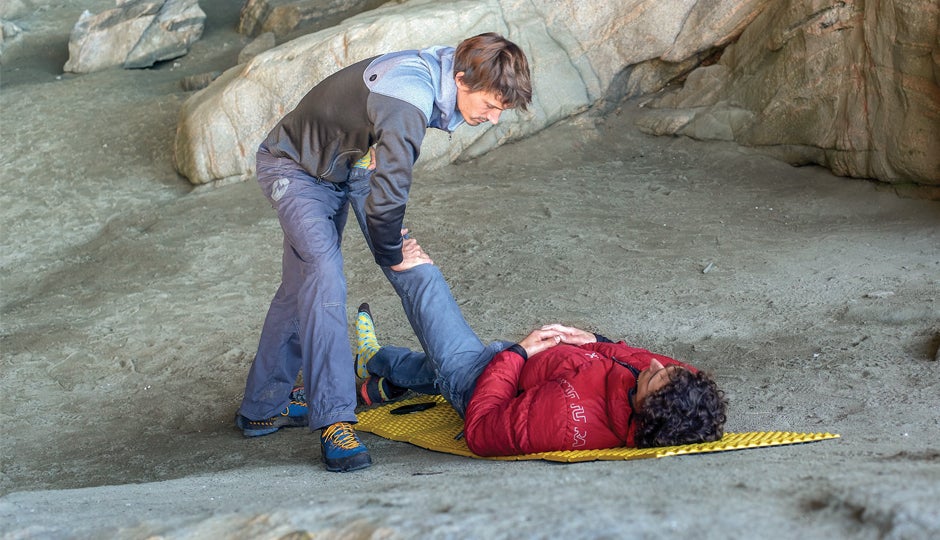Interview: How Adam Ondra Used Next-Gen Visualization to Send Silence (5.15d)

"None"

Imagine Adam Ondra lying on his back, eyes squeezed shut in concentration, while a physiotherapist holds his heel in space, helping him visualize and strengthen his body specifically for a move. The therapist helps him mimic a crux on Silence, the 45-meter, world’s-first 5.15d Ondra climbed September 3 in the Hanshalleren Cave in Flatanger, Norway. Sound “out there”? Well, when you consider that Silence links 20 meters of 5.13d into a 5.15c, with wild, upside-down jessery and a V15 crux, this new, intense, assisted visualization starts to make more sense—Ondra needed every advantage.
Who are you doing this training with?
Adam Ondra: Klaus Isele, who is my physiotherapist and an experienced climber. My work with Klaus is not only on the level of injury prevention, but also on the level of how to climb better thanks to physiotherapy. On a climb as specific as Silence, with such rare, complex, and weird movements, it is crucial.
Explain your process with Klaus.
There are three ways to do visualization, all performed while lying on a bed or mat: You can stay still and only do everything in your head. You can move your hands and feet slightly while you picture the moves. Or you can ask someone to “create” crucial holds and footholds. So, if there is a dyno to a jug, you get your body into position, guide your friend to create the jug exactly where it would be on the wall, and then go for it. I am using all three techniques.
What’s the theory behind this intense work?
The more you visualize, the more you have it dialed and the easier the route feels. You can try it 20 times in real life then 200 times in your mind, and that can bring the same result as “having it dialed”—as if you’d tried the climb 50 times in real life. You save skin, time, and climbing partners.
What aspects of your climbing are you hoping to improve via this training?
Besides better flow, I’m looking to build muscle memory so that even on hard moves my body will stick to the correct movement patterns. Often, once you get pumped, you stop climbing correctly (mistakes like having the shoulders forward, bent back, hips away from the wall, etc.), so the key is to have it be automatic. To have that, you need to climb in reality as much as possible with the right movement patterns, as well as visualize with these patterns.
How did this next-level visualization help with Silence?
It helped me realize how to make certain moves differently, to consider how to perfect the moves. In my head, I’m still using the same handholds and footholds, but maybe I’ll rotate my body more or do something slightly different. This spring, Klaus and I watched footage of me on the route and discussed all the moves, then he came with me on my first trip to Norway this year in May. Then, we even came up with specific exercises for the muscles that were crucial for the crux moves, like calf, shoulder, or abdominal muscles on the respective side.
How often were you doing it?
Fifteen minutes a day for the visualization—either with Klaus, in the stretching room of my climbing gym in Brno, the cabin at Flatanger, up in the cave, or even in my van while traveling—and 40 minutes a day for the special exercises, such as the work on my left side abs, which was crucial for turning upside-down and throwing a foot jam above my head; or for my calves, which are crucial for the kneebars, so I could triple my time resting thanks to stronger calves.
Should this type of visualization become a staple in climbing training?
For sure—it’s another way to make your climbing better. Since skin is often the limiting factor in training, with visualization you can train more without wasting skin.